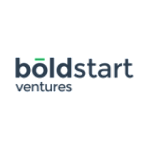For startup founders navigating the complex world of fundraising, understanding VC funds is as crucial as knowing the venture capital firms that manage them. A VC fund is essentially a pool of capital, raised from various limited partners (LPs), that a venture capital firm then strategically deploys into promising startups. It’s the engine that powers venture investment, and its structure, size, and stage focus directly influence the types of companies it can back.
Many founders mistakenly believe all venture capital operates the same way, but the specific fund you engage with dictates everything from the check size they can write to their investment timeline and strategic focus. Knowing whether you're speaking to a seed fund, a Series A fund, or a growth fund can dramatically alter your fundraising strategy and expectations.
In this guide, we’ll break down the different types of funds by investment stage, explain how their operational models and investment sizes vary, and illustrate how a startup’s journey often interacts with multiple funds over time. You’ll gain insights into the lifecycle of a fund, the roles of limited and general partners, and how to align your fundraising efforts with the right capital source.
Top VC Funds by Stage
Not all VC funds are created equal. Funds typically specialize in specific stages of the startup journey, and their strategies, check sizes, and levels of involvement differ significantly. Founders who understand these distinctions can better tailor their fundraising approach and save valuable time targeting the wrong investors.

Top Seed VC Funds
Seed funds are designed to back startups at their earliest, riskiest stage. These funds typically invest small checks relative to later‑stage VC funds, often ranging from $100,000 to $2 million. At this stage, startups are focused on validating their ideas, building early product traction, and demonstrating a path to product‑market fit.
Seed VC funds usually take a hands‑on role, providing not just capital but also mentorship, operational guidance, and introductions to potential hires or early customers. For many founders, this is where the relationship with venture capital begins.
Hustle Fund

About: Hustle Fund is a seed fund for hilariously early hustlers.
Traction metrics requirements: Post-product please
Thesis: Software generalists; we think through customer acquisition a lot
First Round Capital

About: First Round is a venture capital firm that specializes in providing seed-stage funding to technology companies.
Initialized Capital
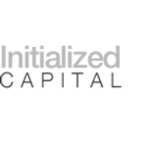
About: Initialized Capital is early stage VC firm focused on helping software engineers, designers and product people with their first seed checks.
Susa Ventures
About: Susa Ventures is an early stage venture capital firm, investing in a growing family of dreamers and builders.
Sweetspot check size: $ 1.25M
Traction metrics requirements: We do invest pre-launch and pre-revenue, but early traction (e.g. $100k+ ARR) is our sweet spot.
Thesis: Companies that can build strong moats over time through network effects, data, or economies of scale.
Illuminate Ventures
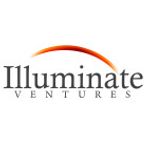
About: Illuminate Ventures is an early-stage VC investor focused exclusively on B2B software companies. We don’t rely on “pattern recognition” or following the herd. Our sweet spot is as a lead or co-lead of a startup's first institutional round of financing. Our team is made up of experienced investors with prior operational success, complemented by a world class, 45+ member Business Advisory Council. We’ve been there ourselves as entrepreneurs and work closely with founders to support them in building truly great companies and teams.
Sweetspot check size: $ 1M
Traction metrics requirements: MVP with initial customers in target ICP. Further along seed stage companies that can demonstrate rapid and measurable ROI.
Thesis: Further along seed stage companies that can demonstrate rapid and measurable ROI.
Boldstart Ventures
About: Boldstart Ventures is a first check investor for technical enterprise founders.
Sweetspot check size: $ 1.50M
Thesis: Day one partners for technical enterprise founders.
Founder Collective

About: Founder Collective is a seed-stage venture capital firm that has
invested in over 300 startups, including Uber, Airtable, PillPack,
SeatGeek, The Trade Desk, Whoop, and Cruise. Founder Collective's
mission is to be the most aligned fund for founders at the seed stage.
FC has offices in NYC and Cambridge, MA and has been the top-rated
seed fund on the Forbes Midas list for four of the last five years.
Sweetspot check size: $ 1.25M
Traction metrics requirements: Founder-market fit + strong customer use case
Thesis: Our mission is to be the most aligned fund for Founders at the seed stage.
Uncork Capital
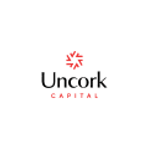
About: Uncork Capital is a seed-stage venture firm that commits early, helps with the hard stuff, and sticks around. Really.
Top Series A & B Funds
Series A and B funds step in once a company has achieved product‑market fit and is ready to scale. These funds typically invest between $2 million and $20 million, with a focus on accelerating growth, expanding teams, and building sustainable revenue streams.
At these stages, VC funds often take board seats and play a more formal governance role, while still providing strategic support. They look closely at metrics such as customer growth, retention, and unit economics. The involvement level is still quite high, but the guidance shifts from idea validation to operational efficiency and market expansion.
24Haymarket
About: Headquartered in London and with a regional office in Edinburgh, we are distinguished by the calibre and engagement of the 24Haymarket Investor Network. We follow a strict investment thesis with a focus on verticals in the nascent stages of high growth where we can leverage proprietary insight from our Investor Network. We focus on investing in companies that have demonstrated initial commercial traction. We adhere to an active investment philosophy with a right to a board seat in each investment we pursue combined with an involved post-investment model.
01A (01 Advisors)
About: 01A is founded on the simple idea that proven scaled operators are uniquely positioned to help hyper-growth companies reach the next level. We’ve grown companies $0 to $123B in yearly combined revenue and created $1T of public company market cap, as the former CEO and CRO/COO of Twitter and CRO of Facebook. We come in right after companies have found product-market fit (usually Series As and Bs) with a $10M-$20M check, and focus on scaling and GTM. We help Founders learn, adapt and improve their pace of execution in order to transform breakthrough products into world-class companies.
Acton Capital
About: Acton Capital Partners is a specialist investor in internet- and mobile-based, consumer-oriented businesses. Having managed more than 30 investments since 1999 as the corporate venture capital business of Hubert Burda Media, the German family-owned global media company, the Acton team brings a wealth of expertise to the companies in which it invests, delivering superior capital returns.
Augmentum Fintech
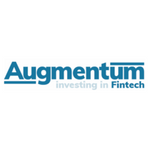
About: Augmentum Fintech is the UK’s only publicly listed fintech fund, investing in talented, dynamic fintech founders across Europe at series A and later. Our current portfolio of 19 companies includes interactive investor, Zopa, Tide, iwoca, Monese, Tide, Habito and Farewill.
Sweetspot check size: $ 4M
Traction metrics requirements: $1m ARR
Thesis: Fintechs that stand out from the crowd
Astia
About: Astia is an angel group that invests in women-owned companies operating in cleantech, SaaS, life sciences, and IoT sectors. We have multiple investment vehicles: - Astia Fund $100MM venture fund Series A/B (5 investment completed, targeting 10-13 more) - Astia Angels direct investing at any stage ($36MM deployed into 64 companies) - Astia Edge Seed Stage investment vehicle investing in Female Black and Lantina CEOs
Array Ventures
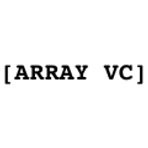
About: Array Ventures funds founders solving impactful problems in forgotten industries using revolutionary technology.
Thesis: We invest in smart people with a bold mission who take big risks in large or new markets.
Top Growth VC Funds
Growth funds provide the capital needed once a company has proven its model and is scaling aggressively, often into new markets or preparing for acquisition or IPO. These funds typically invest $20 million or more, sometimes writing checks in the hundreds of millions.
Unlike earlier‑stage VC funds, growth investors tend to be less hands‑on operationally. Instead, they bring expertise in scaling globally, structuring late‑stage financing, and connecting with strategic partners or acquirers. Their role is heavily focused on governance, growth capital, and financial stewardship ahead of exit events.
Acrew Capital

About: Acrew Capital is a venture capital firm that provides investable assets for diverse angel investors to fund tomorrow's companies.
Thesis: We engage in long-term partnerships with world-class teams that are uniquely suited to transform big challenges into bigger opportunities.
Activate Capital

Sweetspot check size: $ 20M
Traction metrics requirements: >$5M in revenue
Thesis: Digitizing the Industrial Economy
Alumni Ventures Group

About: AVG provides high-quality, diversified venture portfolios to individual investors who previously haven't had access to VC.
Tiger Global

About: Tiger Global is an investment firm focused on public and private companies in the global Internet, software, consumer, and financial technology industries.
Thesis: Our mission is to generate world-class investment returns over the long term. We aspire to do so in a way that makes our partners and portfolio companies proud, as we build a unique, global investment platform.
AtlanVest

Traction metrics requirements: >50% YoY revenue-growth rates, >65% gross-margins, and pathway to operating profitability within 3 years from investment.
Thesis: Investing in category leaders with high gross-margins, proven technology, and product-led growth in niche industries
Glade Brook

About: Glade Brook is a global investment firm that specializes in global growth equity, with a focus on internet, software and technology enabled businesses. The firm partners with entrepreneurs and management teams to accelerate growth and maximize long-term shareholder value, from growth stage through IPO and beyond.
How VC Funds Differ Across Stages
Although all VC funds share the same basic structure, their role in a startup’s journey looks very different depending on the stage. From the size of the initial investment to the level of involvement a fund takes in day‑to‑day operations, understanding these differences helps founders know what to expect — and how to prepare.
Investment Size
The most significant difference between VC funds is the size of the checks they write:
- Seed VC funds: $100,000 to $2 million, spread across several small, early‑stage bets.
- Series A & B VC funds: Typically $2 million to $20 million, concentrated in companies with proven traction.
- Growth VC funds: $20 million+ per investment, sometimes reaching hundreds of millions in later rounds.
These differences aren’t just about the numbers — they reflect a fund’s risk appetite. Seed funds know most of their bets won’t pan out, but the few winners can drive big returns. Growth funds, on the other hand, are far more risk‑averse, backing companies with proven track records.

Level of Involvement
Involvement also shifts as companies grow:
- Seed VC funds tend to be very hands‑on, often acting as close advisors on hiring, fundraising, and go‑to‑market strategy.
- Series A & B VC funds typically take board seats, guiding startups on scaling operations, building repeatable sales models, and entering new markets.
- Growth VC funds are more governance‑focused, ensuring financial discipline and strategic expansion ahead of IPOs or acquisitions.
A founder should expect fewer day‑to‑day interactions at the growth stage, but much more oversight at the board and financial reporting level.
Time Horizon and Expectations
Seed funds invest with patience — they know their companies may take years before meaningful revenue or traction appears. Series A & B funds look for measurable progress and scalability within 12–24 months of their investment. Growth VC funds, however, operate on even clearer timelines, pushing for exit opportunities within a defined horizon to return capital to their limited partners.
How Founders Engage With VC Funds Across Stages
A typical founder journey highlights how different VC funds support growth over time:
- In the beginning, a Seed fund backs your vision, helps validate your product, and gets you to product‑market fit.
- Once you’ve proven traction, a Series A or B fund helps you scale customers, operations, and revenue.
- Finally, a Growth fund steps in with large capital injections to expand globally, optimize operations, and prepare for an IPO or acquisition.
It’s worth noting that some VC funds are structured as multi‑stage investors, which means they can invest across multiple phases of your growth — from seed to later rounds. Others are stage‑specific, committing exclusively to early or late‑stage deals. For founders, this distinction matters. Multi‑stage funds can provide continuity as you scale, but stage‑specific funds may bring deeper expertise and focus at the point where they engage.
Understanding whether a VC fund is multi‑stage or stage‑specific helps founders set realistic expectations, target the right investors for their current needs, and build a long‑term investor strategy that lasts well beyond the first round of funding.
How VC Funds Are Structured and Raised
Behind every VC fund is a structure that dictates how it operates, who supplies the capital, and how that capital flows back to investors over time. For founders, understanding this structure can help make sense of why some funds are eager to write new checks while others are more focused on supporting their existing portfolio.
What Makes Up a VC Fund
A VC fund is typically composed of two main groups:
- General Partners (GPs): The venture capitalists who manage the fund. They raise the capital, decide which startups to invest in, and actively support portfolio companies. In return, they earn a management fee and a share of the profits (known as “carry”).
- Limited Partners (LPs): The investors who supply the capital. LPs can include pension funds, university endowments, sovereign wealth funds, family offices, corporations, and high‑net‑worth individuals. Unlike GPs, LPs are passive investors — they provide the money but do not make investment decisions.
The size of a VC fund has a major influence on its strategy. Smaller funds (tens of millions) typically focus on seed or early‑stage companies, while larger billion‑dollar funds are geared toward writing big growth‑stage checks.

The Lifecycle of a VC Fund
Most VC funds follow a standard lifecycle of about 10–12 years, broken down into phases:
- Fundraising phase: The GPs raise capital from LPs to create a new fund.
- Investment or deployment phase: Usually the first 3–5 years, where the majority of new investments are made.
- Follow‑on capital phase: Remaining capital is reserved to support existing portfolio companies in future rounds.
- Harvest or exit phase: Over time, portfolio companies generate exits through acquisitions or IPOs, returning capital (and profits) to LPs.
Why This Matters for Founders
The stage of a fund’s lifecycle can make a big difference for founders seeking capital:
- Fund age: A fund early in its cycle is more likely to be actively investing, while an older fund may have slowed down new deals and be prioritizing its current portfolio.
- Dry powder: The amount of undeployed capital left in a fund — often discussed in fundraising — directly affects whether a fund is ready to write new checks.
- Multiple funds: Many firms raise and manage multiple funds at once (Fund III, Fund IV, etc.), so a single firm may be making investments from different pools of capital with different strategies.
In practice, this means that founders should ask the right questions: Is this fund actively investing? Which fund is the partner representing today? How much dry powder is available? A clear understanding of the fund lifecycle can help you avoid wasted time and focus outreach where capital is truly available.
Choosing the Right VC Fund as a Founder
For founders, the decision of which VC funds to approach can be just as critical as the pitch itself. Not every fund is a perfect match, and targeting the wrong ones can waste valuable time during an already demanding fundraising process. By understanding how funds differ and aligning with the right ones, you can dramatically improve your chances of building successful, long‑term investor relationships.
Match Stage and Fund Size
The first filter is simple: does the fund invest at your stage? Seed funds write small checks to help validate an idea, Series A/B funds support proven traction, and growth funds fuel large‑scale expansion. Approaching a billion‑dollar growth fund with nothing more than an MVP and a few users will lead to a quick no. Instead, target funds whose size and strategy match exactly where you are in your journey.

Evaluate Investment Thesis and Portfolio
Every VC fund is guided by an investment thesis, which shapes the industries, geographies, and types of companies it will back. Founders should always research whether their company aligns with this thesis. Look closely at the fund’s portfolio: have they invested in startups similar to yours or in adjacent spaces? Do they tend to double down with follow‑on checks when companies perform well? Alignment here not only increases your chances of raising capital but also ensures the fund can bring strategic insights and contacts that matter for your category.
Multi‑Stage vs. Stage‑Specific Funds
Some VC funds take a multi‑stage approach, investing from seed through growth. Others remain highly stage‑specific, focusing only on a narrow slice. Multi‑stage funds can be valuable long‑term partners that provide continuity and large pools of follow‑on capital. Stage‑specific funds, on the other hand, often bring sharper expertise and more hands‑on involvement at the point they engage. There isn’t a “better” option — the right choice depends on where you are today and where you expect your relationship with that investor to evolve.
Fund Lifecycle and Deployment Timing
Timing matters. Many funds are most active in the first three to five years of their lifecycle when they’re deploying new capital. Later in the cycle, they may conserve remaining cash to support existing companies. Talking to a fund that has little “dry powder” available is often a dead end, even if they like your business. Founders should not hesitate to ask directly whether the fund is actively investing from its current pool of capital or between fundraising cycles.
The Value Beyond Capital
Capital is only part of the value VC funds can provide. The right partner brings strategic guidance, introductions to potential customers, support in scaling teams, and credibility that opens doors. At growth stages, a fund’s reputation with IPO preparation or global expansion may be just as important as the check size. One of the best ways to evaluate this is by talking with founders from the fund’s current portfolio to hear about their real experiences working with the partners.
Tools for Connecting with the Right VC Funds
Finding the right VC funds and staying organized throughout the process doesn’t have to be overwhelming. Tools like Visible’s Connect investor database allow you to filter and discover funds by stage, geography, investment size, and sector focus. Once you identify the right funds, you can pull their profiles directly into Visible’s fundraising CRM, where you can track outreach, manage notes, and keep tabs on where each investor stands in your pipeline. Having this organization not only saves time but also signals professionalism to VCs, showing you run your fundraising like you run your business.
Founder Takeaway
Choosing the right VC fund comes down to a few key criteria: the stage must match, the thesis must align, the timing must be right, and the fund should deliver real value beyond capital. Reputation matters, but fit matters more. The best VC fund is not necessarily the most famous one — it’s the one that understands your market, believes in your journey, and has the resources to help you scale.
Navigating the World of VC Funds with Confidence
Understanding VC funds is a critical step for any founder seeking to raise venture capital. As we’ve explored, these pools of capital are not monolithic; they vary significantly by stage, size, structure, and strategic focus. From the early bets placed by seed funds to the large-scale growth capital provided by later-stage investors, each type of fund plays a distinct role in the startup ecosystem.
Founders who grasp the nuances of fund lifecycles, the roles of general and limited partners, and the stage-specific criteria of different VC funds are better equipped to navigate their fundraising journey. This knowledge allows for a more targeted approach, ensuring you connect with investors whose capital, expertise, and timeline align perfectly with your company’s needs.
Ultimately, successful fundraising isn't just about securing capital; it's about forging the right partnerships. By carefully evaluating VC funds based on their stage fit, investment thesis, and value-add beyond the check, you can build a robust investor base that truly supports your growth.
Ready to streamline your fundraising and connect with the right VC funds? Leverage our Connect investor database to discover aligned investors and use Visible at no cost to empower your fundraising strategy with the tools designed to help you succeed.




